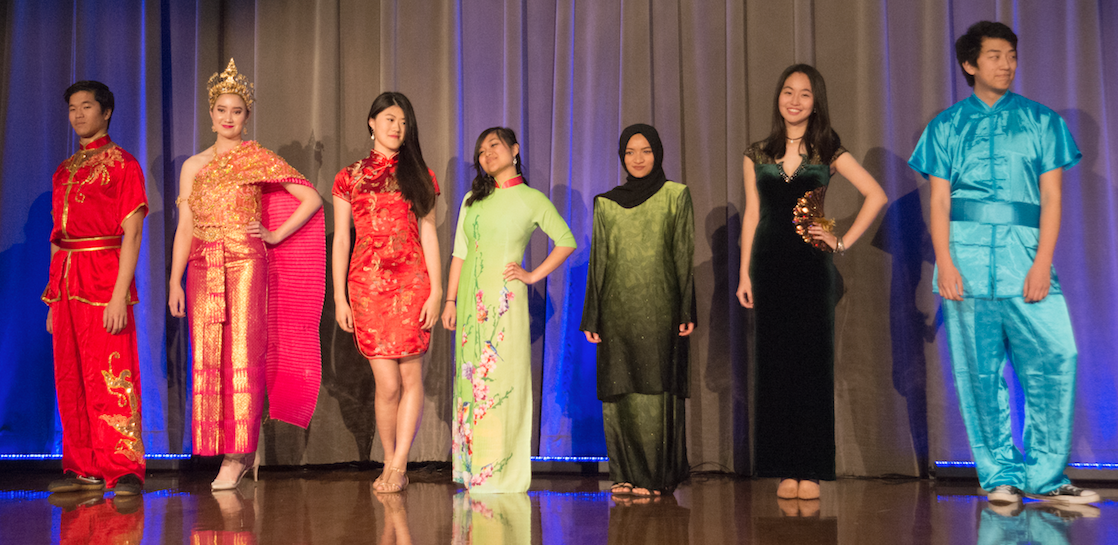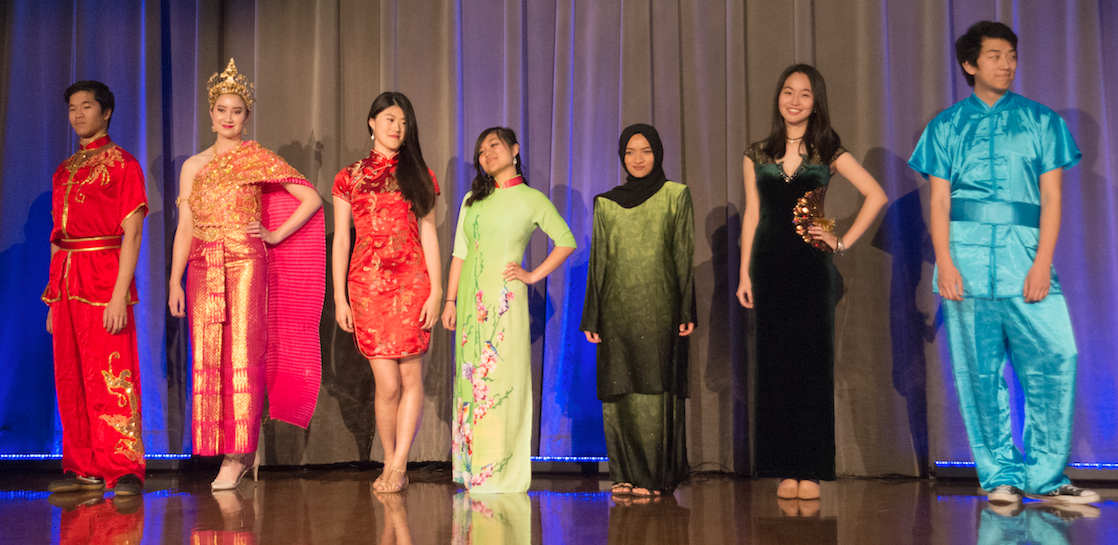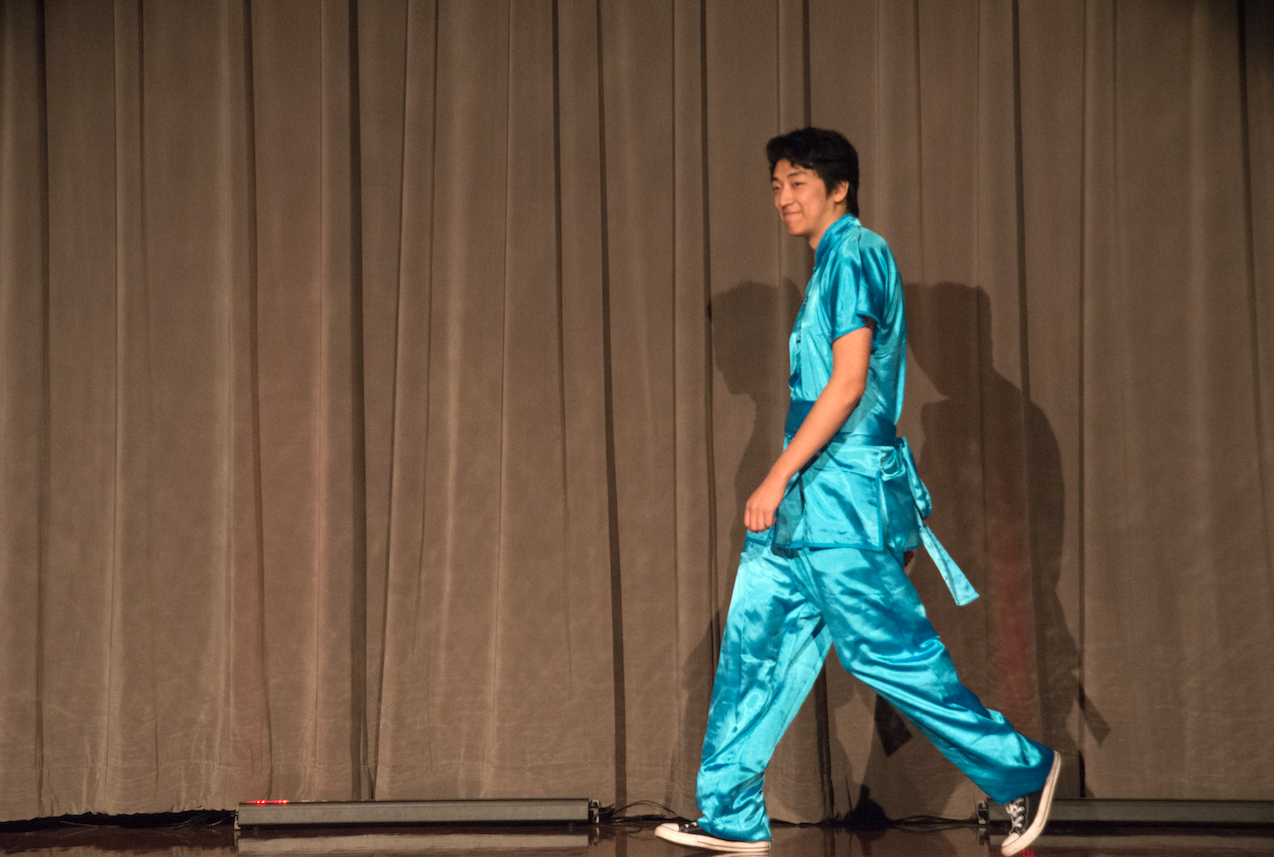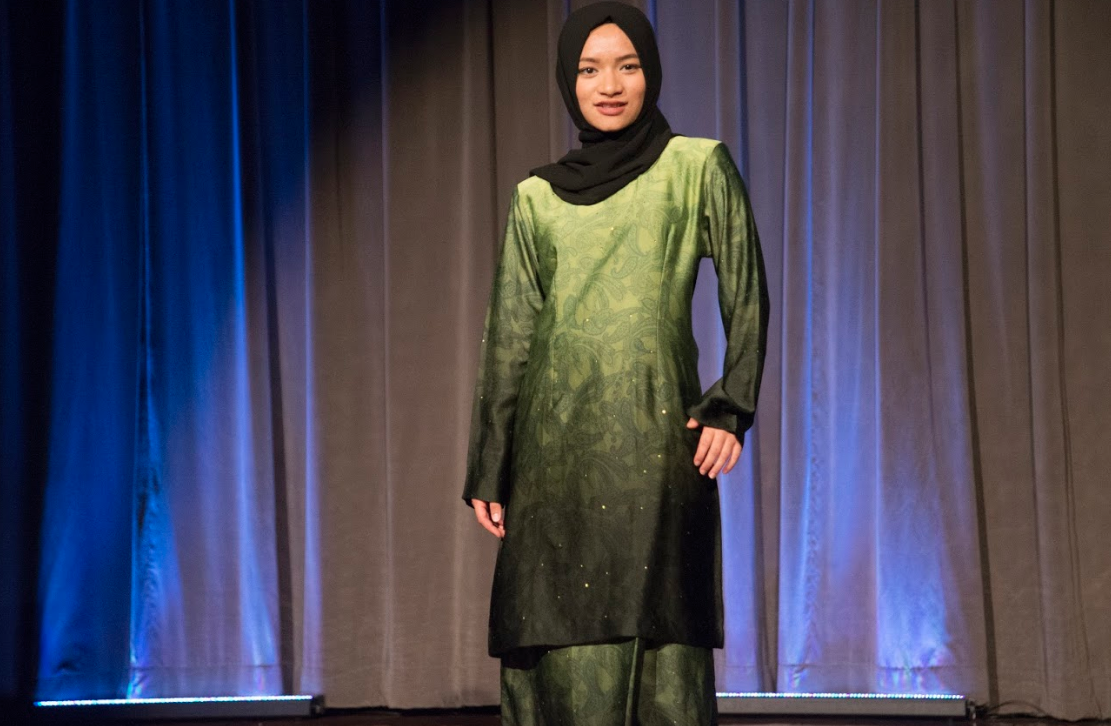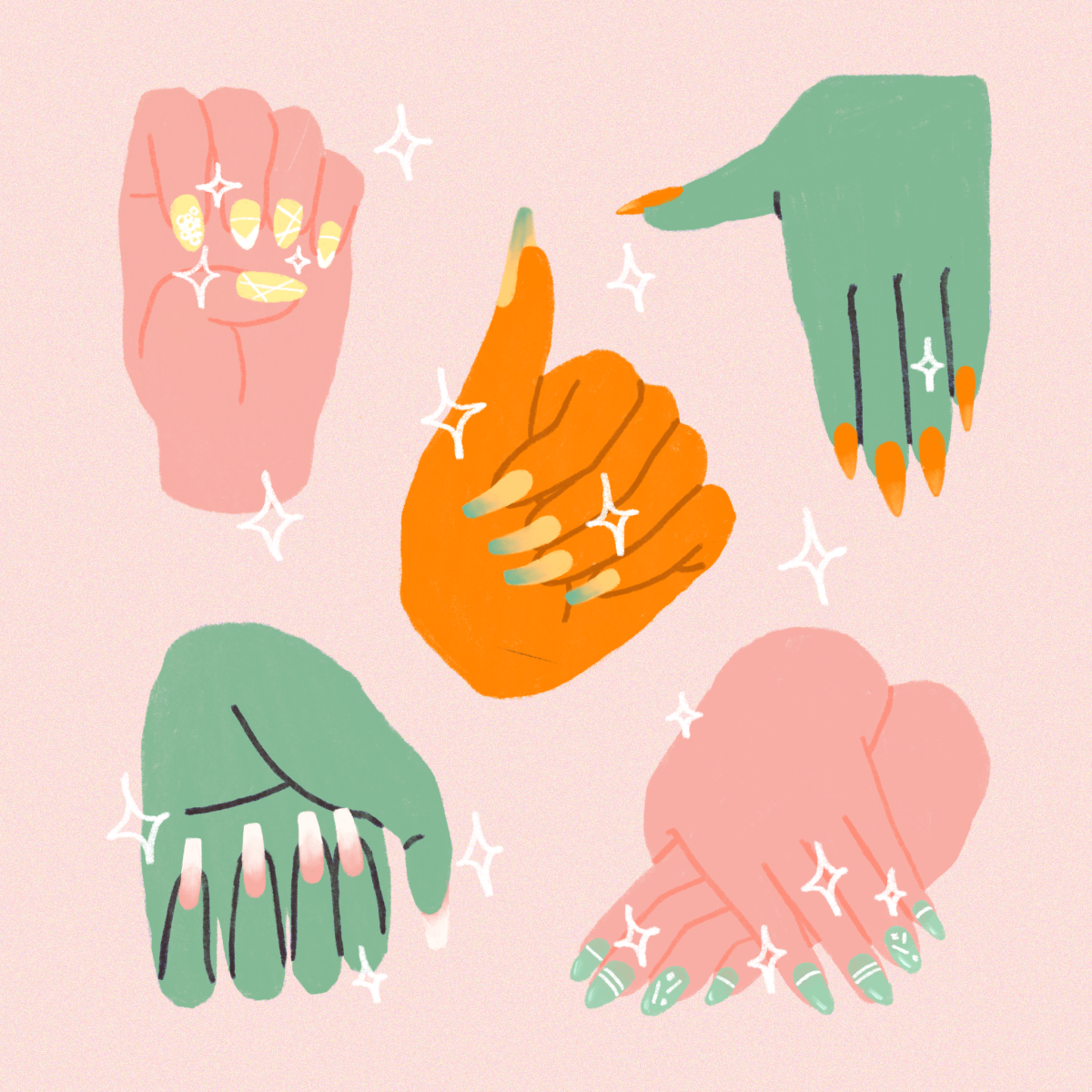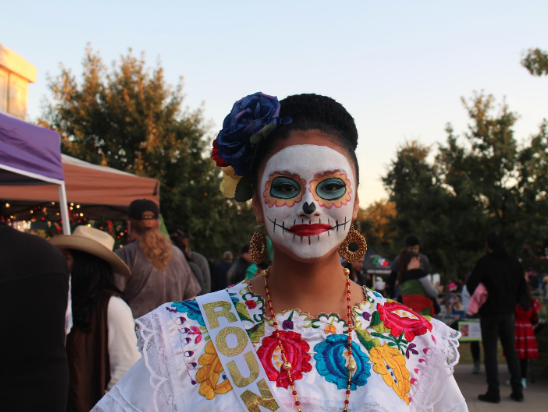The students from different Asian student organizations pose together during the finale of the runway show.
On Wednesday evening, students showcased modern and traditional styles of various Asian countries at the first Mr. + Ms. Runway event, hosted by Campus Events + Entertainment Asian American Culture. The event allowed students from different Asian organizations on campus to connect with their roots, while introducing their culture to people who may be unfamiliar with it.
Story by Kristina Nguyen
Photos by Marybeth Schmidt and Kristina Nguyen
Eric Luo walks the stage in a shiny blue Chinese ensemble and modern American sneakers.
“No one actually represents clothes nowadays,” says Kieu Huynh, the chair of the Asian American Culture committee. “We go to college, we go to work everyday, we don’t wear traditional clothes. “I didn’t even know what Malaysian outfits look like or Taiwanese outfits looks like, until something like this event.”
Fourth-year economics student Jeffrey Ling chose to show one particular aspect of Chinese fashion. He donned a traditional vibrant blue silk uniform that he used in wushu, a form of Chinese martial arts. The outfit was adorned with glittering gold accents, which Ling said was reminiscent of the flashier styles found in Chinese clothing. For his modern ensemble, he wore a classic navy-blue suit that reflected the country’s business culture. “Clothing for China is definitely a very methodological way of thinking because the way you carry yourself everyday, the way you dress, you have to give the impression to people what you want to give an impression of,” Ling says.
For some students, the event was an opportunity to reconstruct ideas of what people thought of as Asian fashion and culture. Trieu Tran, third-year Asian American studies major, wore a traditional Vietnamese silk tunic, called “áo dài,” incorporating springtime colors with a floral design to celebrate the new season. For the modern portion of the show, she wore a blue chiffon dress that reflected the simplicity and elegance of contemporary Vietnamese women. “I chose to represent Vietnam to expose people to our culture and that there are different aspects of Asia and not just China,” Tran says.
Nurin Salehuddin sports a Malaysian green ombre tunic, accessorizing with a black headscarf.
Suha Shukri, a second-year public health major, and Nurin Salehuddin, a first-year undeclared major, also hoped to shift preconceived notions of Asian cultures with their representations of Malaysia. They wore long, flowy tunics that featured intricate designs and complementary headscarfs. They say they wanted to show how headscarves could be used as accessories instead of barriers to style. They felt that it was important to expose their culture to others because of the lack of Malaysians at the University of Texas at Austin and the current political rhetoric in America. Although the event didn’t include all Asian countries, the participants felt like the show was a significant step to showcasing the diversity of their cultures through the power of fashion. “It was just a symbolism of hope for me,” Salehuddin says of the event.































